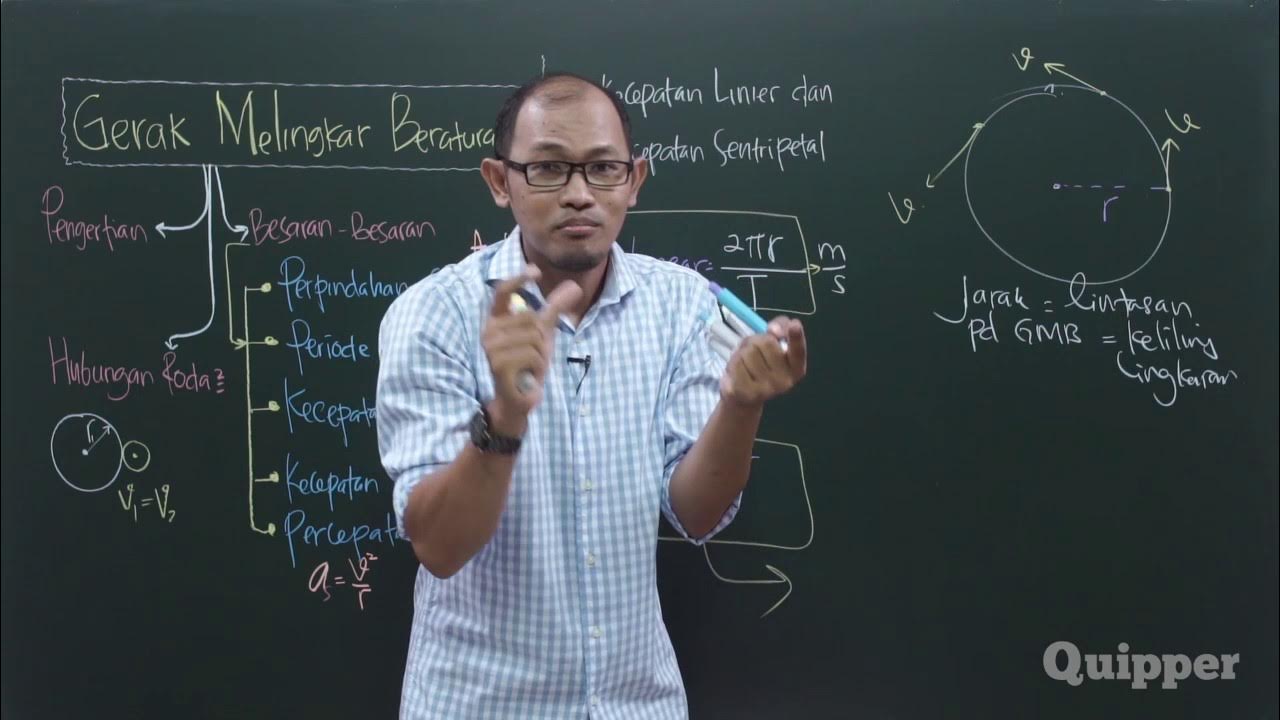Visual physics derivation! (Centripetal acceleration)
Summary
TLDRThis video offers an intuitive explanation for why centripetal acceleration is proportional to velocity squared over radius (v²/r). By visualizing a car moving in a circle, it explains how velocity changes with speed and radius, and how these changes impact acceleration. When the car’s speed increases, the velocity change (Δv) increases, while time decreases, leading to an acceleration proportional to the square of the speed. Conversely, increasing the radius increases the time, reducing acceleration. The video provides a clear breakdown of these relationships, demystifying the v²/r formula.
Takeaways
- 🚗 Centripetal acceleration has a v²/r dependency, which can be intuitively explained using a car moving in a circular path.
- 🔄 The change in velocity (Δv) represents how much the velocity vector changes as the car moves from one point to another along the circle.
- 📏 When the speed of the car doubles, the velocity vectors also double in size, leading to a proportional increase in Δv.
- ⏳ Acceleration depends not only on Δv but also on the time taken for this change to occur, which decreases as the car's speed increases.
- 🔺 By doubling the speed, acceleration increases by four times (v²), as the change in velocity doubles while the time taken halves.
- ⚡ Tripling the speed results in nine times more acceleration due to the combined effects of increased Δv and reduced time taken.
- 🎯 The square term in acceleration (v²) arises from the relationship between increased velocity and decreased time, multiplying the acceleration effect.
- 🔄 Doubling the radius of the circle does not change Δv, as the car moves through the same angle, but it increases the time taken to cover the path.
- 🕒 As the radius increases, acceleration decreases proportionally (1/r), since the change in velocity remains constant while the time taken increases.
- 📉 The overall result is that centripetal acceleration is proportional to v² and inversely proportional to the radius (1/r), due to the combined effects of speed and time.
Q & A
What does centripetal acceleration depend on according to the video?
-Centripetal acceleration depends on both the square of the speed (v²) of the car and the radius (r) of the circular path. Specifically, it is proportional to v² and inversely proportional to r.
How does increasing the speed of the car affect centripetal acceleration?
-When the speed of the car is doubled, the change in velocity also doubles, and the time taken for the change is halved. As a result, centripetal acceleration increases four times, or by a factor of v².
What happens to the time taken for the car to travel from point A to point B when the speed is increased?
-When the speed is increased, the time taken for the car to travel from point A to point B decreases. For example, if the speed is doubled, the time taken is halved.
Why does centripetal acceleration increase by v² when the speed increases?
-The increase by v² happens because both the change in velocity (Δv) and the reduction in time for that change occur proportionally. These two factors combine to create the squared relationship between speed and acceleration.
How does increasing the radius of the circle affect centripetal acceleration?
-When the radius of the circle is doubled, the change in velocity remains the same, but the time taken to travel from point A to point B increases. This results in the acceleration being halved, showing that acceleration is inversely proportional to the radius.
Why does the change in velocity (Δv) remain the same when the radius increases?
-The change in velocity remains the same because the car is traveling through the same angle in both cases. The direction of velocity changes by the same amount, even though the radius has increased.
What happens to the time taken when the radius is increased but the speed remains the same?
-When the radius is increased, the distance between points A and B increases, which means the time taken also increases if the speed remains the same.
What effect does tripling the radius have on centripetal acceleration?
-Tripling the radius results in the time taken to travel from point A to point B becoming three times longer, while the change in velocity remains the same. This causes the acceleration to become one-third of what it was before.
Why is centripetal acceleration inversely proportional to the radius?
-Centripetal acceleration is inversely proportional to the radius because as the radius increases, the time taken for the velocity to change also increases, resulting in a slower rate of velocity change and thus reduced acceleration.
What is the relationship between speed and centripetal acceleration, as shown in the video?
-The relationship between speed and centripetal acceleration is quadratic. As the speed increases, centripetal acceleration increases by the square of the speed (v²).
Outlines

هذا القسم متوفر فقط للمشتركين. يرجى الترقية للوصول إلى هذه الميزة.
قم بالترقية الآنMindmap

هذا القسم متوفر فقط للمشتركين. يرجى الترقية للوصول إلى هذه الميزة.
قم بالترقية الآنKeywords

هذا القسم متوفر فقط للمشتركين. يرجى الترقية للوصول إلى هذه الميزة.
قم بالترقية الآنHighlights

هذا القسم متوفر فقط للمشتركين. يرجى الترقية للوصول إلى هذه الميزة.
قم بالترقية الآنTranscripts

هذا القسم متوفر فقط للمشتركين. يرجى الترقية للوصول إلى هذه الميزة.
قم بالترقية الآنتصفح المزيد من مقاطع الفيديو ذات الصلة

MATERI KINEMATIK kelas 11 bag 8 GERAK MELINGKAR BERATURAN GMB K Merdeka

Introduction to Centripetal Acceleration - Period, Frequency, & Linear Speed - Physics Problems

FISIKA KELAS X | GERAK MELINGKAR (PART 1) - Besaran-besaran dalam Gerak Melingkar

Understanding Circular Motion

Quipper Video - Fisika - Gerak Melingkar Beraturan - Kelas 10

percepatan sentripetal dan tangensial
5.0 / 5 (0 votes)
